For Toronto-based makeup department head Burton LeBlanc, the Hulu series The Handmaid’s Tale was a dream assignment, where he was given free reign to create makeup as he best saw fit for the show’s characters. “Reed Morano established the first few episodes,” LeBlanc explained of the director and executive producer of the pilot and next two episodes. “They have put a lot of trust in me. It did help that [series star] Elisabeth Moss is one of the executives.”
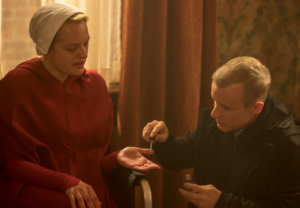
Working out of Local 873 in Toronto, LeBlanc has overseen a small department with a key makeup artist and assistant, plus three hairstylists. On bigger days, depending on how many extras are required in an episode, LeBlanc might bring in extra makeup artists and hairstylists. “We have some great crews,” LeBlanc said of his Ontario Province hub. “You get to know who you like who’s worked really well. Everyone can do all of the makeup, making sure that, because it’s all based on realism, you don’t want to see the makeup.”
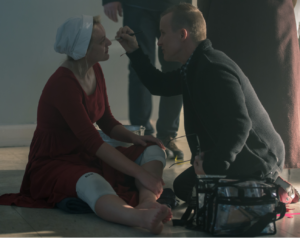
From the outset, LeBlanc was afforded extensive camera tests for all of the main characters, with Moss being paramount. “Her and I talk all the time,” he said. “She goes with whatever I want, but she might have an idea—she’s very involved.”
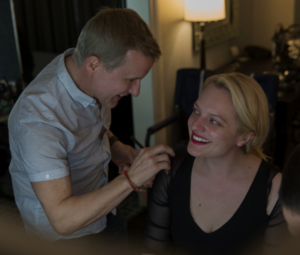
In Canada, LeBlanc’s crews work 15-hour days, shooting anywhere from four to seven scenes per day. “We start at 5am and work to 10pm-11pm,” revealed LeBlanc. “We are supposed to get a 10-hour turnaround. Typically, it’s an eight-day shoot per episode.”
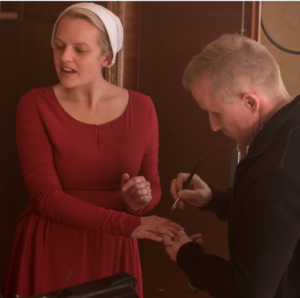
In its first season, 10 episodes of The Handmaid’s Tale were photographed, while in the second and third seasons, 13 were shot. For the fourth season, production got two weeks in before the quarantine was instituted. “We didn’t get a full episode down,” LeBlanc remarked. “We were ‘broad shooting’ the first three episodes, all together.”
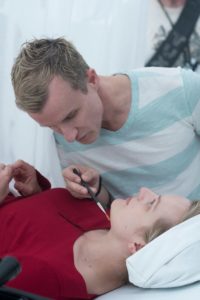 In his rich career, across 20+ years, LeBlanc has worked on many prominent films in the horror genre which have filmed in Canada, including Resident Evil, Poltergeist, and Dawn of the Dead. “The really dark stuff,” he related. “That has helped—just before I did this one [Handmaid’s Tale], I did the TV series 12 Monkeys: down and dirty, real, and raw. I worked with David Anderson on Cinderella Man in Toronto. All of my work has been here.”
In his rich career, across 20+ years, LeBlanc has worked on many prominent films in the horror genre which have filmed in Canada, including Resident Evil, Poltergeist, and Dawn of the Dead. “The really dark stuff,” he related. “That has helped—just before I did this one [Handmaid’s Tale], I did the TV series 12 Monkeys: down and dirty, real, and raw. I worked with David Anderson on Cinderella Man in Toronto. All of my work has been here.”
In the future, LeBlanc, who recently secured an agent in Los Angeles, conveyed that he would be open to all manners of projects, including those in the United States. “I really love the horror genre and sci-fi,” he said. “I’d like more of that. TV and film are pretty much the same now; I would like to get more movies, trying to open up outside of Toronto.”





